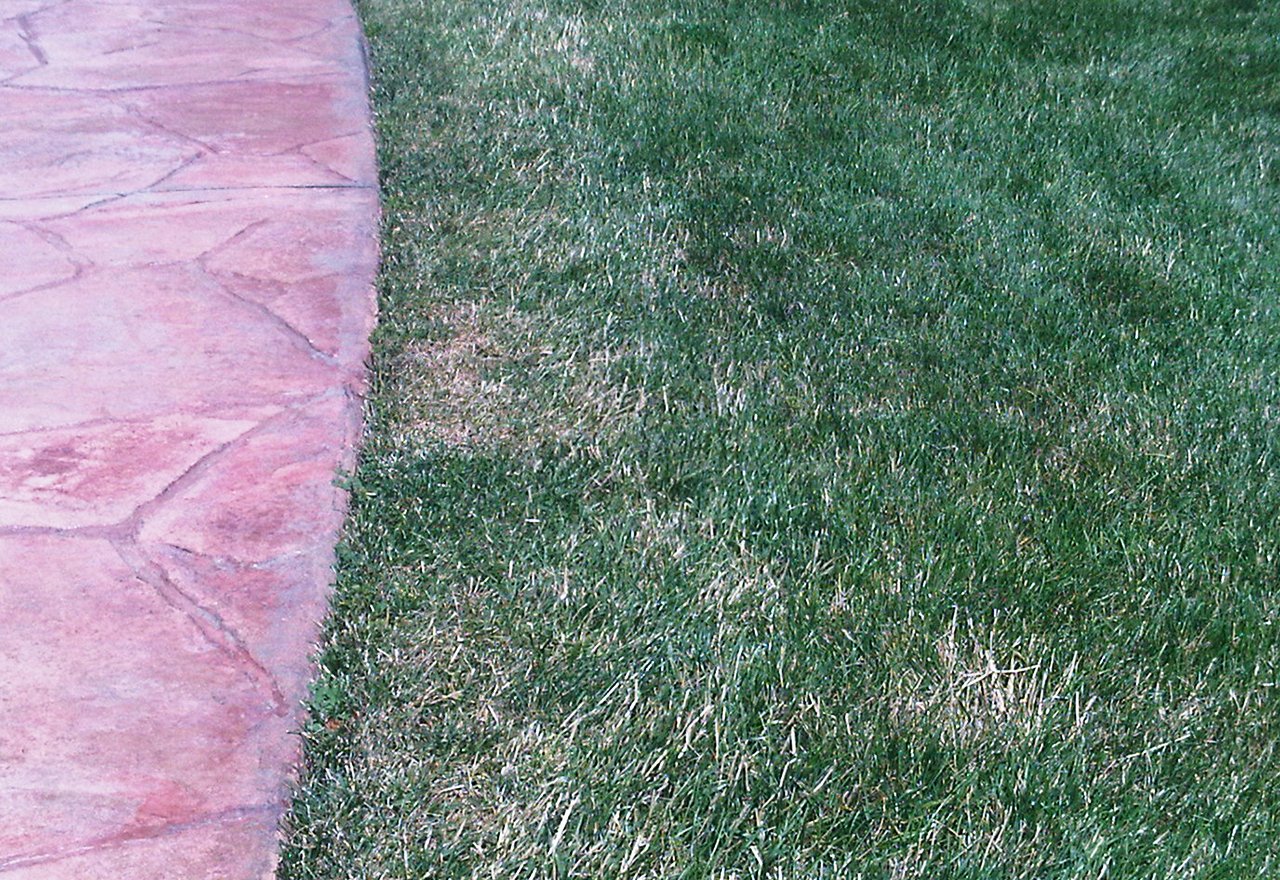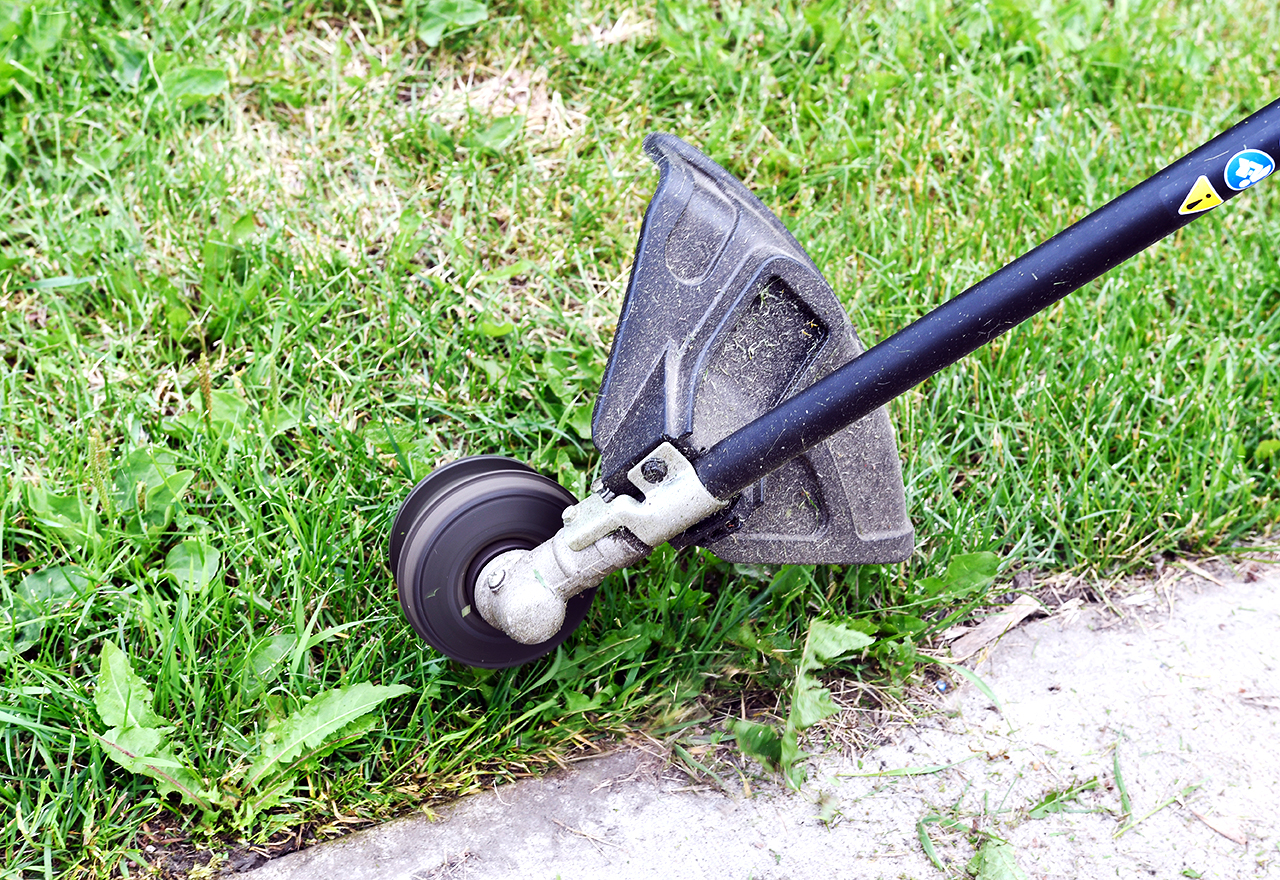Scalping the Edges of Your Lawn Leads to Weeds Taking over those Spots

Whether you call your trimmer a weed wacker, a weed eater, a weed whip, a string trimmer, or a weed trimmer, it can do real damage to your lawn. (In other countries, they can be called a strimmer or a whipper snipper.) These tools are used to maintain areas that a lawnmower cannot reach, such as around mulched trees and gardens, along fence lines, around play areas, around telephone poles, or along walkways and driveways. Trimmers help maintain a clean, neat appearance to keep the entire lawn the same length. But when used wrong, trimmers can reduce the neatness and invite weeds and undesirable grasses such as Crabgrass, Annual Bluegrass, Thistles, Bentgrass and more.
If you’ve been too aggressive with your trimmer more than a few times, you may be “scalping” the edges of your lawn instead of just cutting the grass. This damages the grass and often exposes soil and grass roots. Angeling the trimmer toward the ground too far causes this damage.
If your grass is still intact, water the area to encourage growth every three days. You can also slice in some new seeds in the most damaged sections. If you’ve whacked the grass to the ground and just have exposed soil to deal with, take this opportunity to re-seed the area. Our constant recommendation for healthy grass in our Midwest region is a mix of 5% Microclover, 90% Turf Type Tall Fescue, and 5% Kentucky Bluegrass. We sell a pre-made mix at our Good Nature Organic Lawn Care Shop: our Tuff Turf Lawn Seed includes Turf Type Tall Fescue and Kentucky Bluegrass in this recommended ration. We also sell bags of Microclover that you can mix in yourself. Microclover is a legume and will feed your soil and stay green the entire summer. Our chosen variety of Microclover is smaller and does not flower so it will blend into your lawn well.
Additionally, Good Nature Organic Lawn Care is happy to assess the damaged area to help with your needs. Our trained technicians are available to discuss any issues with you during our scheduled treatments or we are ready to stop by your home for a quote.
Holding your string trimmer at a 90 degree angle to the ground or just not edging at all will improve the situation. We do recommend giving your lawn a few weeks of break from trimming to recover from damage.
Store your trimmer in a dry location to prevent rust and corrosion. If your trimmer has an air filter, replace it every summer, possibly more frequently if you use your trimmer weekly. Frequently check your spark plug: if it’s black, replace it. Also, check your screws and nuts often to be sure they are tight. Throughout the growing season, hose off your trimmer to remove debris when needed. At the end of the season, fully wash your trimmer using dish soap and water. Be sure to fully remove dirt, grass, and any other debris. Also, empty the fuel tank at the end of every season.
We recommend that you do your edging or trimming before mowing the entire lawn so that the mower will cut up the grass you’ve trimmed.
We always recommend mowing high (3.5 to 4.5 inches) and watering infrequently for a healthy lawn. You want your trimming to be at this same height.
You don’t want to damage trees with your trimmer. We recommend mulching around trees - but not Volcano Mulching. Be sure that you can see your tree’s root flare and don’t pile the mulch too thick.
